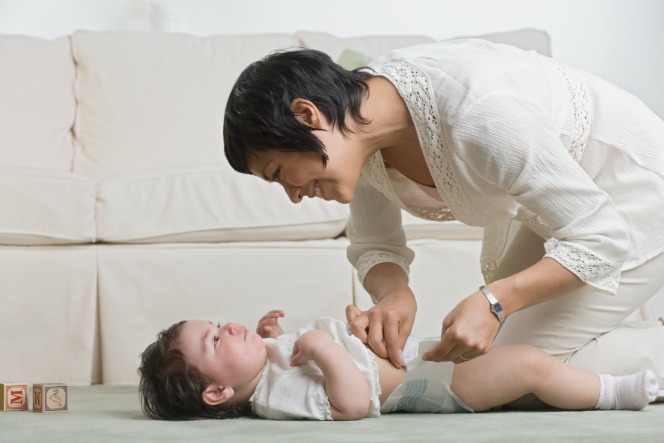On Day 3 of RIE Foundations we closely examined play. We looked at its importance and how to create an environment optimal for a child’s play, including examining the significance of the parent-child relationship in the ability for a child to play.
It was a day of many aha moments for me. Would you believe, I didn’t think I would really have any aha moments over here? I thought I knew the ins and outs of respectful parenting and was just looking to deepen my understanding. Turns out, I have a lot to learn.

So, what does play and the parent-child relationship have to do with each other. Ideally, we would like the child to play with independence with not so much parental interference wouldn’t we?
Well, yes, but a baby’s (and i’m going to go out on a limb and say child’s) attention at play is closely connected to their relationship with the adult who cares for them. We were told this today and it was somewhat profound for me.
I mean, I knew that there was an obvious link between a child’s attention bucket being full and their ability to play independently for long periods of time but I didn’t really understand the importance of play for a child’s development, confidence and sense of self and therefore just how imperative it is for a child to feel connection during care giving tasks.
Magda Gerber once said that how we care for our babies is how they feel love. We care for our babies when we are doing care giving activities with them.
A young child who does not find connection with their care givers during care giving moments will feel the burden of that during periods set aside for their play. A child’s play is their work and without a clear mind, the security of knowing they have a strong connection with their caregiver, they will not be able to have sustained focus during their work.
With connectivity, a child is able to play without reserve or concern. When all his needs have been met in a tender and respectful way, he knows he is loved. He can then get about his job of exploring, practising, moving, problem solving and discovering.
So much of a child’s learning, their physical and emotional development and their confidence and feelings of competence come about from their play. A child who can’t play, will struggle to thrive. So how do we connect with children during care giving moments?
1. Slow down
Slow way down! Enjoy the time being with the child and don’t think about just getting the job done as quickly as possible.
2. Give undivided attention
Turn off the phone. Tell them “I am going to change your nappy so I am going to turn off my phone so we can spend this time together.” Be with them when they are eating and don’t multitask. Give them 100% of your attention.
3. Notice and acknowledge what they notice
If a child you are diapering appears to stop and look at the light, stop too and follow their gaze to the light and say: “You see the light.” Have that moment with them before resuming the diapering.
4. Invite them to participate
Instead of just doing things to them when bathing, diapering, feeding etc, trust in the child’s competence and ask them to help: “Can you lift your legs up so I can wipe your bottom.” “Put your arm through the sleeve here.” Leave time after each request for them to process and do what you have asked or at least to show a sign that they are ready for you to help do that task with them.
A child who is not involved in their own care giving can become trained to have a disconnect with their body whilst being touched. So, invite them in, leave the distracting toys out and make the time about your relationship with them and the care giving task that needs completing.
5. Slow down
Did I say slow down already?
There is no way I can put in words exactly what it means to truly connect during these times and what that looks like. We saw a lot of inspiring footage today that really drove home just how special that time between carer and child can be. I only wish my children were still of an age that they needed me to be in charge of these types of care giving activities so I could practice what I learned.
I think, for my older children, I need to look at things like hair brushing, tooth brushing, nail clipping, bandaid applying and face washing with these eyes now. They might be shorter snippets of time to connect but I am sure I can slow way down in all these tasks and seek more connection during these times.
Regardless, once a child experiences care giving in this way; with consistency, kindness and pleasure, they learn to trust in it. They know that before long they will be back with their caregiver for more, so, in the meantime, they can get about their important business of play.
You can read day 1 The Importance of Respect here and Day 2 It’s Okay if We’re Not Perfect here.

Pingback: Respectful Parenting: Encouraging Cooperation From Birth - Peaceful Parents, Confident Kids
I was like you too – I didn’t think there would be many aha moments and ended up aha-ing all over the place. I’m loving your posts!
Thank you, Jennifer. It’s such a great eye-opener, isn’t it?!
Pingback: The Power of Pausing
Pingback: 5 Reasons to Let Kids Have the Day off School
Pingback: Six Steps to a Peaceful Toddler Meal Time
Pingback: What I Noticed When I Stopped Looking at My Phone Whilst Breastfeeding - Peaceful Parents, Confident Kids